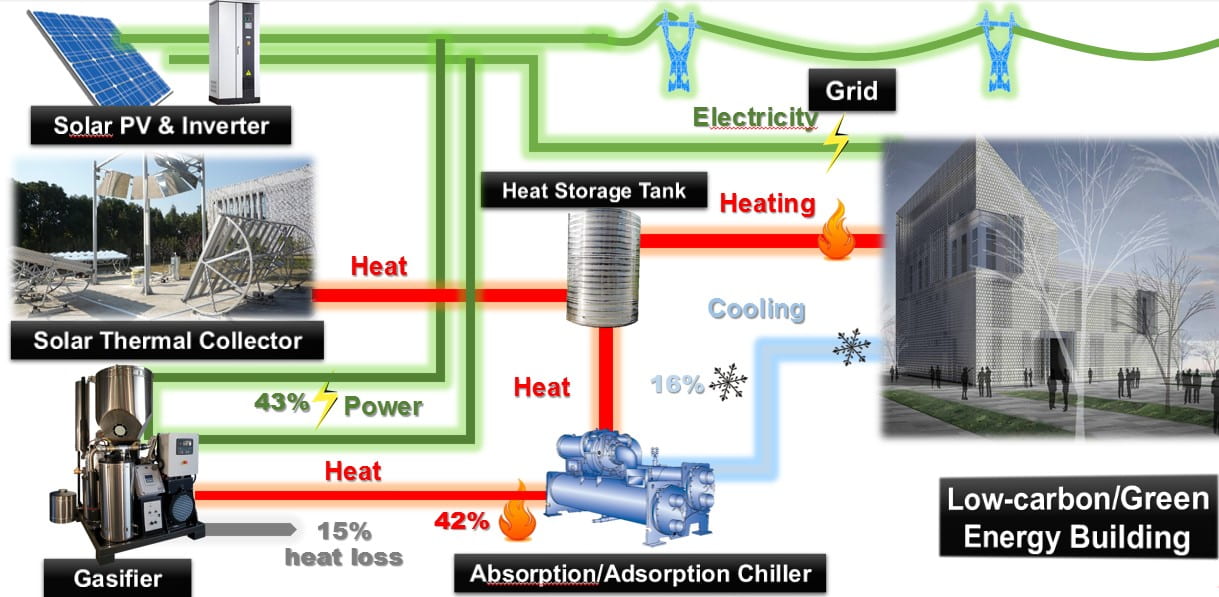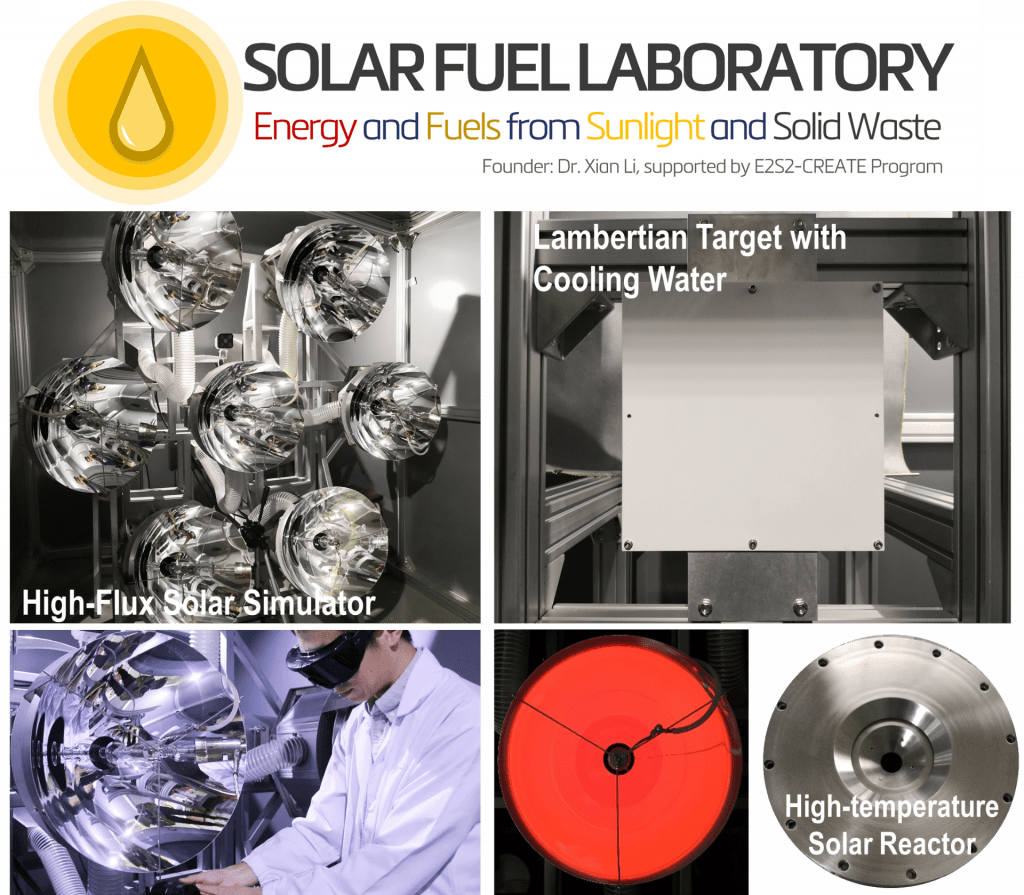-
Energy and Fuels from Sunlight, Solid Waste, CO2 and H2O
A solar-and-biomass bi-source nexus is introduced to provide a promising and sustainable approach for the synthetics of cogeneration of electrical power, fuels and cooling & heating. Biomass/waste as a promising carbonaceous feedstock could be an appropriate candidate due to its combustible form stored high-energy density.

Solar gasification uses highly concentrated solar radiation as source of high-temperature process heat to drive gasification processes. In general, improving the heat value of the product syngas, the steam/CO2 mixture serves as the gasification agent of carbonaceous feedstock. Thus, solar energy in an amount equal to the enthalpy change of the endothermic reactions. Conversion performance of thermochemical gasification of solid waste can be significantly improved, accompanied by solar energy stored as a fuel carrier.
-
Integrated Solar-Gasification waste-to-energy system
1. Introduction
This study aims to develop an integrated system by incorporating two important sustainable technologies, i.e. solar thermal and waste heat recovery, as shown in Figure 1. Toward its practical application, the system must be well designed to achieve high standards in five important areas, reliability, security, affordability, flexibility, and sustainability. Energy generation, storage, and transport processes in the system need to be reliable, which requires extensive experiments on the fundamental mechanisms underlying the processes and delicate design on the connections of different components (e.g., solar thermal component, energy storage component, energy transport component, waste-to-energy component, etc.) of the system. The proposed system is signified by sustainability because it aims to resolve the sustainability issues related to energy and environment. However, it is important to understand the interaction between consumers and the system to achieve the sustainable deployment and contribution of the system to our society.
 Figure 1. Hybrid Energy System Combined Gasifier and Solar Energy (Green Building)
Figure 1. Hybrid Energy System Combined Gasifier and Solar Energy (Green Building)
2. Equipment and materials
The Combined Cooling Heating and Power (CCHP) system consists of a main system and an auxiliary system. The main system consists of a gasifier, an internal combustion engine (ICE), a generator, a single-effect absorption chiller (SAC), a fan coil and some heat exchangers. The integrated biomass-driven power generation unit (PGU), mainly composes of a biomass gasifier, an ICE and a generator. The solar-driven thermochemical gasification system consists of a high-concentration solar collector, a high-concentration solar collector and a biomass reactor, as shown in Figure 2.
 Figure 2. Solar-driven thermochemical gasification of carbonaceous feedstocks
Figure 2. Solar-driven thermochemical gasification of carbonaceous feedstocks
3. Results
The study of solar-driven gasification investigates the fundamentals of heat and mass transfer phenomena in high-temperature multiphase reactive flows exposed to high-flux irradiation, which is the key point to improve feedstock-to-syngas efficiency. In the high-temperature stage, thermal radiative transfer and convection heat transfer coupled to the reaction kinetics is analysed for heterogeneous chemical systems in which their optic properties, species composition, and phases vary as the chemical reaction progresses.In the CCHP-gasification hybrid system, with output power increasing from 4kW to 12kW, the energy efficiency of gasification increased from 62.6% to 65.0%; heat recovery efficiency by CCHP increased from 29.0% to 32.5% and overall energy efficiency increased from 32.5% to 42.4%, as shown in Fiugure 3.
 Figure 3. Evaluation of energy output of the CCHP system
Figure 3. Evaluation of energy output of the CCHP system
4. Publications
- X. Li, M. Lin, Y. Dai, C.H. Wang, “Comparison-based optical assessment of hyperboloid and ellipsoid reflectors in a beam-down solar tower system with linear Fresnel heliostats”, Journal of Solar Energy Engineering, 139(6) (2017)
- C.Y. Li, J.Y. Wu, Y.J. Dai, Y. Shen, X. Kan, C. H. Wang, “Evaluation of a CCHP system based on biomass gasification in different climate zones in the U.S.”, 15th International Conference on Sustainable Energy Technologies (SET2016), Singapore, 20-22 July 2016.
- X. Li , Y. Shen, X. Kan, T. K. Hardiman, Y. Dai, C.H. Wang, “Thermodynamic assessment of a solar/autothermal hybrid gasification CCHP system with an indirectly radiative reactor”, Energy, 142, 201-214 (2017).
- X. Li, A. Lin, C.H. Young, Y. Dai, C.H. Wang, “ Energetic and economic evaluation of hybrid solar energy systems in aresidential net-zero energy building”, Applied Energy, 254, 113709 (2019).
